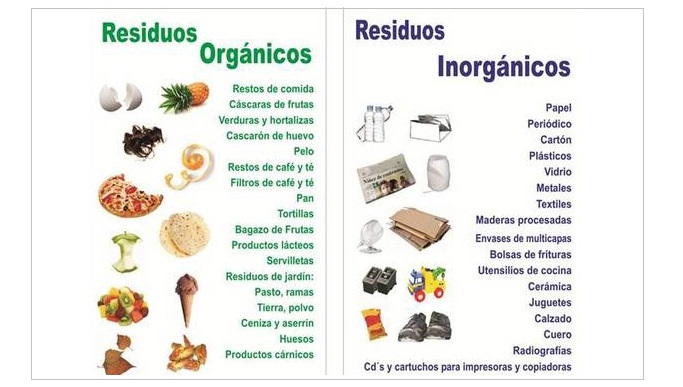The organic trash They are materials originating from a living being (animal or plant) that have no use or that cannot be reused. Organic waste is continuously generated by living beings throughout the planet, in addition to being generated from many human activities, such as industrial processes or the daily actions of people (peeling a fruit, for example). For instance: mowed grass, sawdust, coconut shell.
Organic waste is easily recyclable, and if it is separated from inorganic waste and subjected to the appropriate processes, it can be reused as food, compost, construction material, ornaments, among others.

Examples of organic waste
| Eggshells | Some | Hooves |
| Animal feathers | Chicken entrails | Cigarette ash |
| Sawdust | Animal hair | Coffee leftovers |
| Fish scales | Human excrement | Paper bags |
| Damp wood | Dried tree roots | Fish bones |
| Straw | Mandarin seeds | Human hair |
| Grape seeds | Melon peel | Flower petals |
| Dry leaves | Human urine | Animal guts |
| Pruned tree branches | Mowed grass | Animal urine |
| Animal droppings | Rotten eggs | Unused cotton fabrics |
| Rotten fruits | Pig bones | Leftovers |
| Banana peel | Dead plants | Apple peel |
| Cow bones | Contaminated food | Cardboard packaging |
| Spoiled milk | Badly frozen food | Onion peel |
| Watermelon seeds | Paper | Melon seeds |
| Animal carcasses | Used yerba | Coconut shell |
Types of garbage
According to its origin, two different types of garbage can be distinguished:
- Organic trash. They are those wastes that come directly from some living organism, be it a colony of bacteria, a plant, a tree, a human being or any other animal.
- Inorganic trash. They are those wastes that come from materials, chemicals or substances that do not originate in living organisms, such as iron, plastic, cables, porcelain, glass, etc.
The organic trash It differs from inorganic garbage in that the former can be disintegrated in a short time from the chemical processes generated by bacteria (decomposing organisms) that represent the final stage of the food chain.
The inorganic trashOn the contrary, it can require enormous amounts of time to be fully disintegrated, which can range from several decades to millions of years, and can be highly polluting during the decomposition process (as occurs with some plastics or with nuclear waste).

Sources of organic waste
In general, we can say that organic waste can originate in three main ways:
- First, it can originate from bodily functions normal living beings, as in the case of excrement, hair, nails, dried flowers, etc.
- Second, it can originate from a human activity that sought to extract an economic resource from living beings (wood, food, oils), generating in the process organic materials that are not usable, such as sawdust or the guts of processed animals.
- Third, organic waste can be generated from organic materials (generally food) that are in a state of decomposition or that are unhealthy because they have expired or have been poorly preserved, such as badly frozen meat or rotten fruit.
